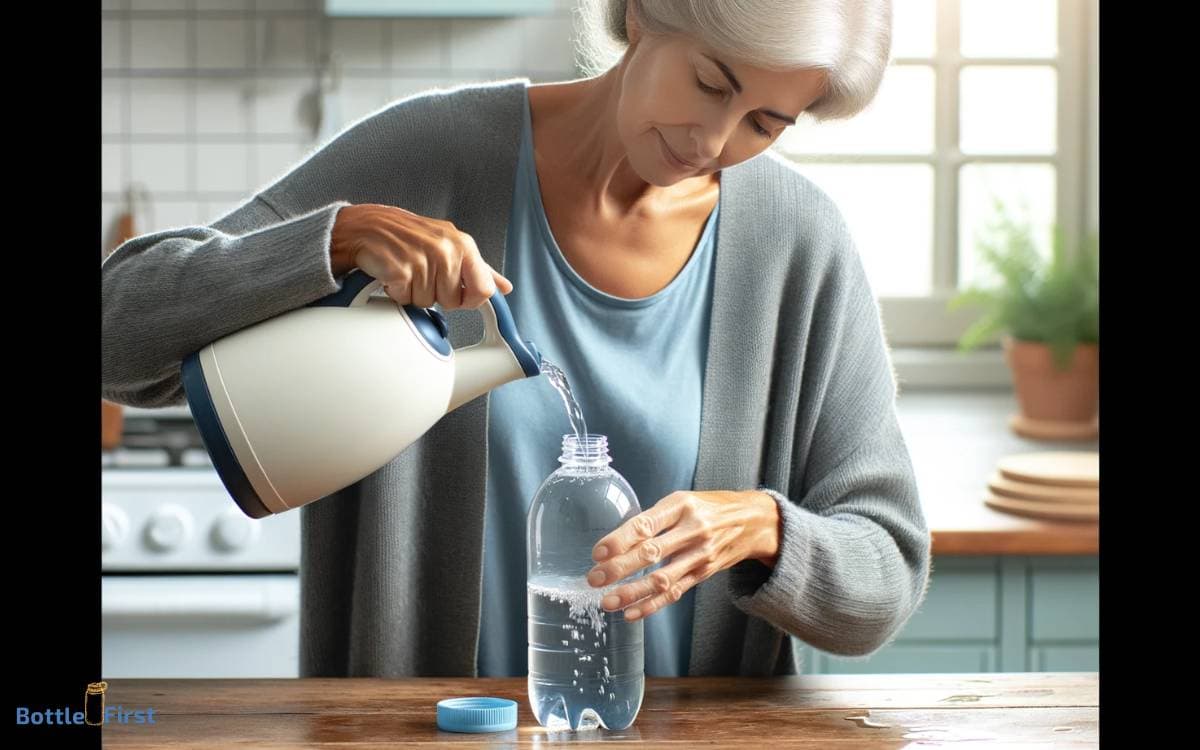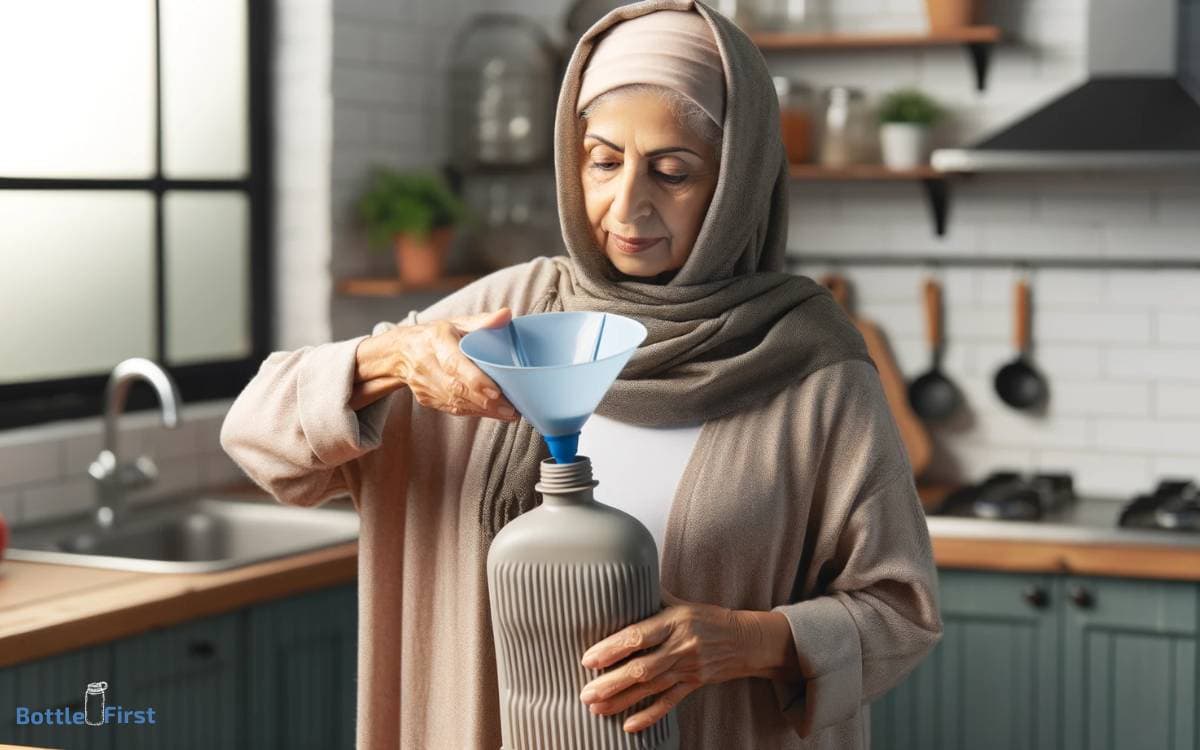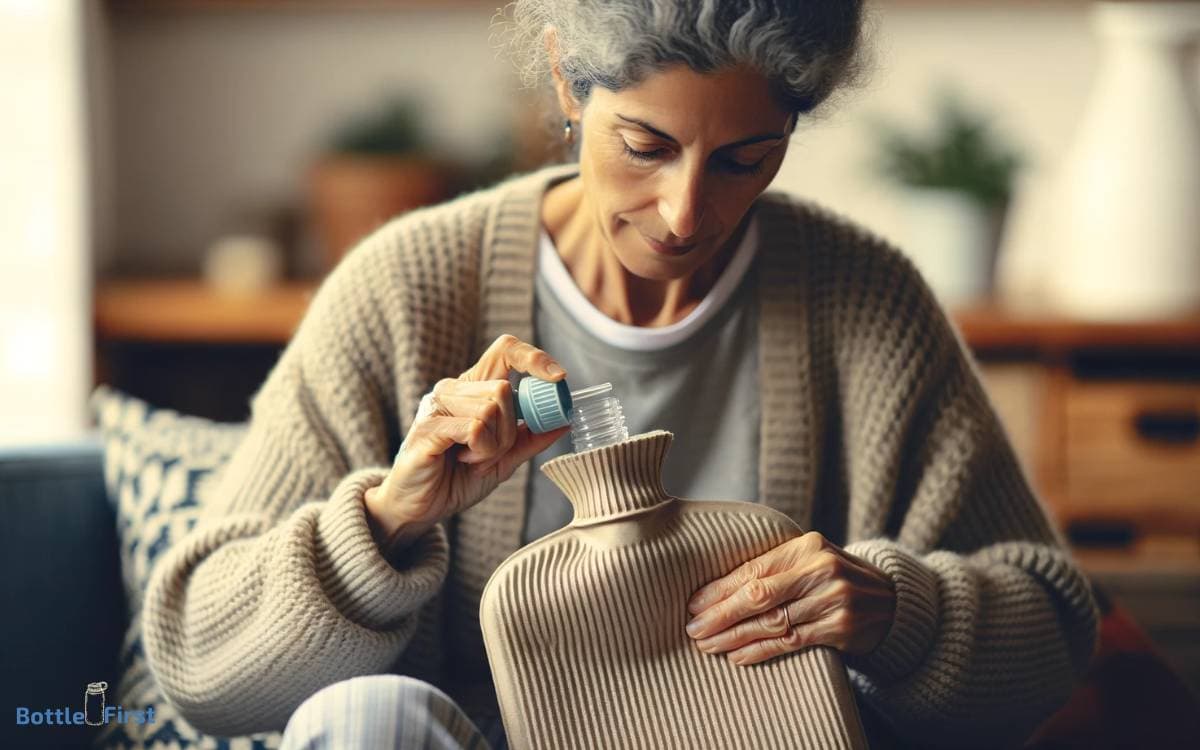Can’t Open Hot Water Bottle: 8 Easy Steps!
Opening a hot water bottle can sometimes be a bit tricky due to their tight seals, but with the right techniques, you can easily enjoy the comforting warmth they provide.
Whether you have a traditional rubber hot water bottle or a newer model, this step-by-step guide will walk you through the process of opening and filling your hot water bottle with ease.
By following these effective tips, you’ll be able to experience the cozy relaxation that a hot water bottle offers in no time.
Step-by-Step Guide to Opening a Hot Water Bottle
If you’re struggling to open a hot water bottle, follow these simple steps to make the process easy and hassle-free.
Whether it’s a traditional rubber hot water bottle or a newer model, these tips will help you get that soothing warmth you desire.
Gather Your Supplies
Before you begin, ensure you have everything you need:
- The hot water bottle
- A cloth or towel for protection
- Warm water (not boiling)
- A funnel (if required)
- A screw-on cap or stopper (if not already attached)
Step 1: Protect Your Hands
Hot water bottles can sometimes be challenging to open due to their tight seals. To avoid injuring your hands or damaging the bottle, wrap it in a cloth or towel. This will provide better grip and protect your skin.
Step 2: Check for a Screw-On Cap or Stopper
Some hot water bottles come with a screw-on cap or stopper, which makes opening and closing them easy. If your bottle has one, simply unscrew it counter-clockwise to open.
Step 3: Use Warm Water
If your hot water bottle doesn’t have a screw-on cap, it likely has a plug or stopper. To make it easier to open, soak the plug or stopper in warm water for a few minutes. Warm water helps soften the material and reduces resistance.
Step 4: Apply Steady Pressure
With the cloth-wrapped bottle in one hand and the plug or stopper in the other, gently but firmly twist counter-clockwise.
Apply steady, even pressure, being careful not to use excessive force. If it’s still difficult to open, you can use a rubber grip or a pair of rubber gloves for added traction.
Step 5: Use a Funnel (if needed)
In some cases, you may have a narrow opening on your hot water bottle, making it challenging to pour water inside. If this is the case, use a funnel to make filling the bottle easier.
Step 6: Fill the Bottle
Once you’ve successfully opened the hot water bottle, fill it with warm (not boiling) water to your desired level. Be sure not to overfill to prevent leakage when sealing it later.
Step 7: Seal the Bottle
To close the hot water bottle, reinsert the plug, stopper, or screw-on cap clockwise, securing it tightly. Make sure it’s snug, but avoid overtightening, which could damage the seal.
Step 8: Test for Leaks
Before using the hot water bottle, check for any leaks by giving it a gentle squeeze. If water begins to seep out, you may need to reseal it or replace any damaged parts.
Now that you’ve successfully opened and filled your hot water bottle, you can enjoy the soothing warmth it provides. These steps should help you tackle this simple task with ease.
Causes of a Hot Water Bottle That Won’t Open
A hot water bottle that refuses to open can be frustrating to deal with, and there are a few factors that might cause this issue.
Some common reasons include the lid being stuck due to pressure buildup or the threads being damaged, making it difficult to rotate and release the top.
- Pressure buildup inside the bottle: This can occur if the water is too hot or the air within the bottle expands too much.
- Damaged threads on lid or bottle neck: This makes it difficult to unscrew the lid.
- Over-tightening the lid: This could lead to damaged threads or a stuck lid.
- Old or worn-out materials: Over time, the materials of the hot water bottle can weaken, making it challenging to remove the lid.
Troubleshooting Tips for When You Can’t Open a Hot Water Bottle
If you find yourself unable to open a hot water bottle, don’t panic. There are a few simple tips that can help you access your comforting source of warmth without risking damage or injury.
Increase Friction: Hold the cap tightly using a cloth or rubber grip to avoid slipping and increase your grip.
Apply Heat: Hold the hot water bottle under hot running tap water, focusing on the cap area. This can help expand the cap material, making it easier to open.
Gentle Tapping: Tap the cap gently on its sides using the palm of your hand or a soft cloth. This can help dislodge any stickiness inside the cap, aiding in its removal.
Avoid Tools: Refrain from using tools like pliers or wrenches, which can cause damage to the cap and possibly lead to leaks.
Manufacturer’s Advice: If you’re still unable to open the hot water bottle after trying the above tips, seek advice from the manufacturer’s guidelines or contact customer support for further assistance.
Safety Precautions
Safety should always be a top priority when performing various tasks and activities.
At Home:
Fire Safety:
- Install smoke detectors and carbon monoxide detectors, and regularly test them.
- Have fire extinguishers in key areas of your home and know how to use them.
Electrical Safety:
- Use electrical outlets and cords in good condition. Avoid overloading sockets.
- Install ground fault circuit interrupters (GFCIs) in areas with water, like kitchens and bathrooms.
Chemical Safety:
- Keep household chemicals, cleaners, and medications out of the reach of children.
- Follow the instructions on product labels when using chemicals.
Fall Prevention:
- Install handrails on staircases and use non-slip mats in areas prone to slips and falls.
- Keep walkways clear of clutter and obstacles.
Kitchen Safety:
- Use proper cooking techniques and keep flammable materials away from open flames.
- Be cautious when handling hot pans and boiling liquids.
In the Workplace:
- Machine Safety:
- Follow machine safety protocols and use protective equipment when operating heavy machinery.
- Be cautious around moving parts and keep loose clothing and accessories away from machines.
Ergonomics:
- Maintain proper posture and ergonomics to prevent musculoskeletal injuries. Adjust your chair, desk, and computer to promote comfort and productivity.
Chemical Handling:
- Follow safety data sheets (SDS) and use personal protective equipment (PPE) when working with hazardous chemicals.
- Store chemicals properly and dispose of waste in accordance with regulations.
Emergency Procedures:
- Be familiar with emergency evacuation routes, first aid procedures, and location of fire extinguishers.
- Know how to report workplace hazards and injuries to your supervisor.
In the Outdoors:
Sun Safety:
- Use sunscreen, wear protective clothing, and stay hydrated when exposed to the sun.
- Be mindful of the risks of heat-related illnesses in hot weather.
Water Safety:
- Follow water safety rules when swimming, boating, or engaging in water sports.
- Wear life jackets in appropriate situations, and ensure good visibility when boating.
Wildlife Awareness:
- Be aware of wildlife in your area and take precautions to avoid encounters or conflicts.
- Carry bear spray or other deterrents when hiking in areas with known wildlife.
In Travel and Transportation:
Seat Belts and Child Safety Seats:
- Always wear a seat belt when driving or riding in a vehicle.
- Ensure children are securely fastened in age-appropriate car seats.
Defensive Driving:
- Follow traffic laws and drive defensively to reduce the risk of accidents.
- Avoid distractions while driving, such as texting or using a mobile phone.
Public Transportation:
- Follow safety guidelines on public transportation and be aware of your surroundings.
- Keep an eye on your belongings to prevent theft.
Travel Precautions:
- Research and take precautions specific to your travel destination, such as vaccinations, local customs, and emergency contact information.
Safety is a critical aspect of daily life, no matter where you are or what you’re doing. Always prioritize safety by staying informed, taking precautions, and using the necessary protective measures to prevent accidents and minimize risks.
Conclusion
A hot water bottle that won’t open can be frustrating. However, with the right troubleshooting tips, you can easily fix the issue.
In some cases, the cause may be a faulty cap or clogged vent. In such cases, you can try using a towel for grip or hot water to unclog the vent. Another option is to seek the assistance of a professional.
Remember to exercise caution when dealing with hot water bottles to avoid injuries. By following these simple tips, you can enjoy the benefits of your hot water bottle without any hassle.
FAQ
What can I do if I can’t open my hot water bottle?
Depending on the type of bottle, try using two pairs of pliers in a twisting motion to open the stopper.
Additionally, you can also try to heat up the stopper with hot water or a blow dryer before attempting to open it.
What is the most common cause of not being able to open my hot water bottle?
The most common cause is usually from the rubber around the stopper becoming stiff and dried out, preventing it from easily opening.
Is it safe to use a hot water bottle if I can’t open it?
No, it is not safe to use a hot water bottle if you cannot open it as it can become a fire hazard or cause a hot water burn due to the mounting pressure within the bottle.
Are there any precautionary measures I can take to prevent my hot water bottle from becoming stuck?
To prevent it from becoming stuck, try to always store your hot water bottle away in a cool, dry place.
Additionally, completely empty the bottle each time you use it and make sure to never overfill the bottle.












